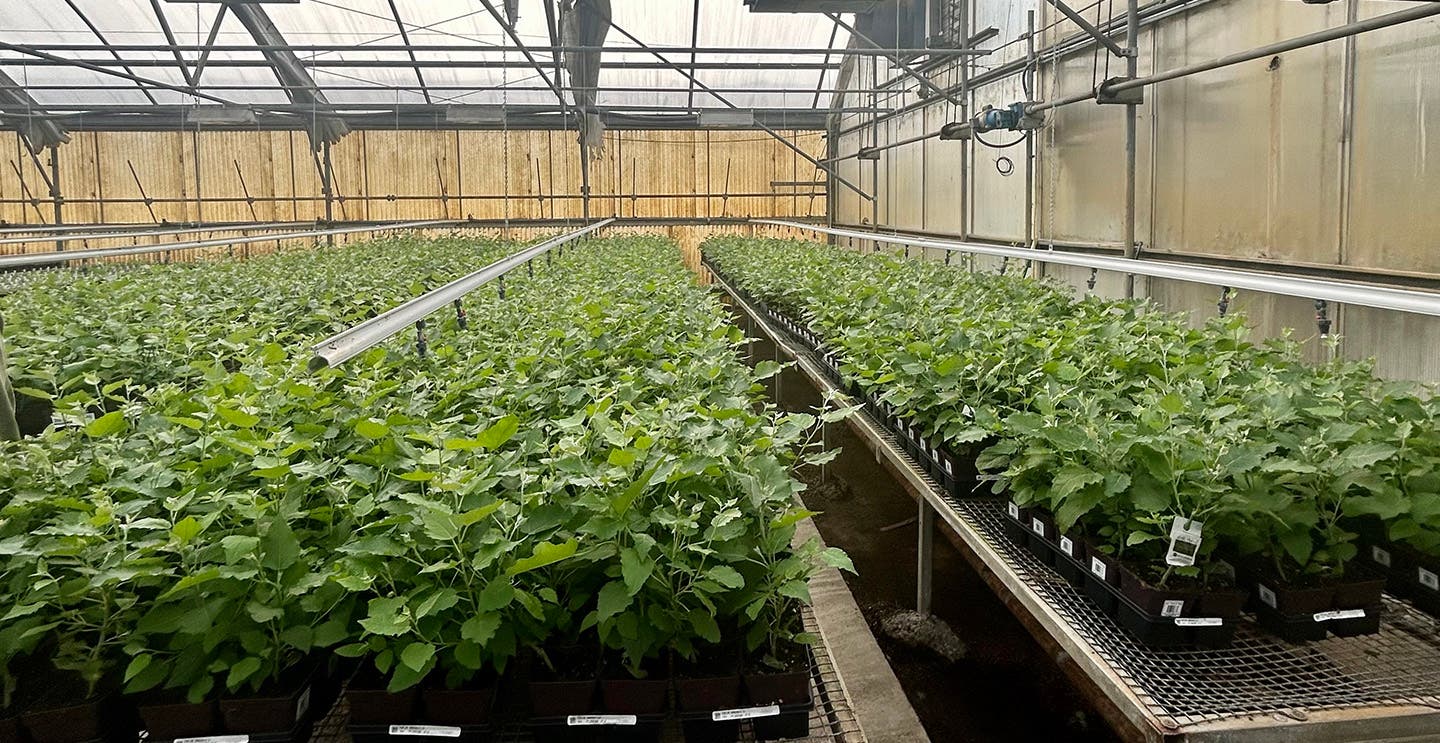Scientists genetically alter plants to solve global climate change
In the relentless pursuit to mitigate the global climate crisis, scientists and biotech innovators are turning towards an unexpected ally

[Oct. 23, 2023: Staff Writer, The Brighter Side of News]
Propagating mother plants for our plantings in Georgia and Ohio with our commercial nursery partners. (CREDIT: Living Carbon)
In the relentless pursuit to mitigate the global climate crisis, scientists and biotech innovators are turning towards an unexpected ally: nature itself. While technological advancements continue to play a critical role, a more organic solution is emerging on the horizon, one that involves genetically altering plants to transform them into supercharged carbon sponges.
This groundbreaking approach, reminiscent of a concept straight out of a science fiction novel, is currently under rigorous investigation by researchers and companies like the climate biotech firm Living Carbon.
Living Carbon, spearheaded by CEO and co-founder Maddie Hall, is at the forefront of this revolutionary venture. The company is meticulously engineering plants, enhancing their natural ability to combat climate change by absorbing carbon dioxide (CO2) more efficiently. Their efforts are concentrated on creating approximately 100 lines of what are termed "mother trees," plants designed to be superior in sequestering carbon.
This ambitious endeavor doesn't just stop at the conceptual level. Cuttings from these mother trees are integral to refining Living Carbon's genetic modifications. These cuttings have been propagated and sent to nurseries, signaling the transition from research to larger-scale production, an essential step towards practical application.
Related Stories
The company’s objectives are both ecological and measurable. Living Carbon has set the ambitious goal of planting around four million trees, equivalent to 6,000 acres, by the conclusion of Spring 2024. However, their vision extends far beyond that initial target. If they can scale up their efforts to encompass four million acres by 2030, they could potentially decrease current global CO2 emissions by a substantial 1.6%.
A part of their strategy involves pilot projects, where they've planted four of their most promising tree lines on private properties in Georgia and Ohio.
These initiatives serve a dual purpose: firstly, to monitor the carbon sequestration capabilities of their genetically engineered trees, and secondly, to establish a business model that benefits everyone. Through the sale of carbon removal credits, Living Carbon generates revenue, while landowners receive substantial compensation for hosting these vital ecological warriors on their land.
The science behind these carbon-guzzling plants is rooted in one of nature's most fundamental processes: photosynthesis. By enhancing photosynthesis efficiency, these genetically altered trees and crops can absorb a notable amount of CO2, much more than their unmodified counterparts. It's not about reinventing the wheel but rather optimizing it; Living Carbon is amplifying a natural procedure intrinsic to plants, making them more proficient at what they inherently do.
The promise this technology holds isn't just theoretical. Living Carbon's intensive research and experimentation have begun to bear fruit. In a paper published in April, the company revealed that its modified poplars demonstrated a significant surge in biomass, around 35-53% more than the controls. This increase is tantamount to eliminating an additional 17-27% of CO2 from the atmosphere. These encouraging results propelled the company to file new patents and embark on a field trial comprising 600 trees at the University of Oregon, aiming to validate their preliminary findings.
Living Carbon's first plantlets in tissue culture in 2020. (CREDIT: Living Carbon)
Despite the progress, challenges and questions remain. One critical aspect Living Carbon is striving to refine is enhancing the trees' capacity to store more carbon below ground and for extended periods. This factor is crucial because trees that decompose re-release CO2 into the atmosphere, undermining carbon sequestration efforts.
Parallel experiments are underway to develop crops with enlarged root systems capable of deeper soil penetration. These roots could produce increased quantities of a carbon-rich polymer known as suberin, contributing further to carbon reduction.
In some sites that only had a 10% survivability for reforestation, they were able to achieve 98% survivability over 24 months. (CREDIT: Living Carbon)
Living Carbon's optimistic outlook envisions the development of plants capable of stabilizing roughly 30% of the carbon they capture from the air within the soil. However, while these aspirations are based on scientific grounding and initial successes, they have yet to be demonstrated on a substantially larger scale.
The journey of integrating advanced biotechnology with the inherent capabilities of nature presents a hopeful, innovative avenue in the fight against climate change. By turning to the environment itself, companies like Living Carbon underscore the potential synergy between nature's timeless wisdom and human ingenuity. As this pioneering work continues, it may very well pave the way for a greener, more sustainable future, leveraging the best of both worlds in service of the planet we all share.
For more science and technology news stories check out our New Discoveries section at The Brighter Side of News.
Note: Materials provided above by The Brighter Side of News. Content may be edited for style and length.
Like these kind of feel good stories? Get the Brighter Side of News' newsletter.
Joseph Shavit
Head Science News Writer | Communicating Innovation & Discovery
Based in Los Angeles, Joseph Shavit is an accomplished science journalist, head science news writer and co-founder at The Brighter Side of News, where he translates cutting-edge discoveries into compelling stories for a broad audience. With a strong background spanning science, business, product management, media leadership, and entrepreneurship, Joseph brings a unique perspective to science communication. His expertise allows him to uncover the intersection of technological advancements and market potential, shedding light on how groundbreaking research evolves into transformative products and industries.



